Language Arts Terms 1 English Ix Skills How Is a Simile Used
Complete guide to figurative language for students and teachers.
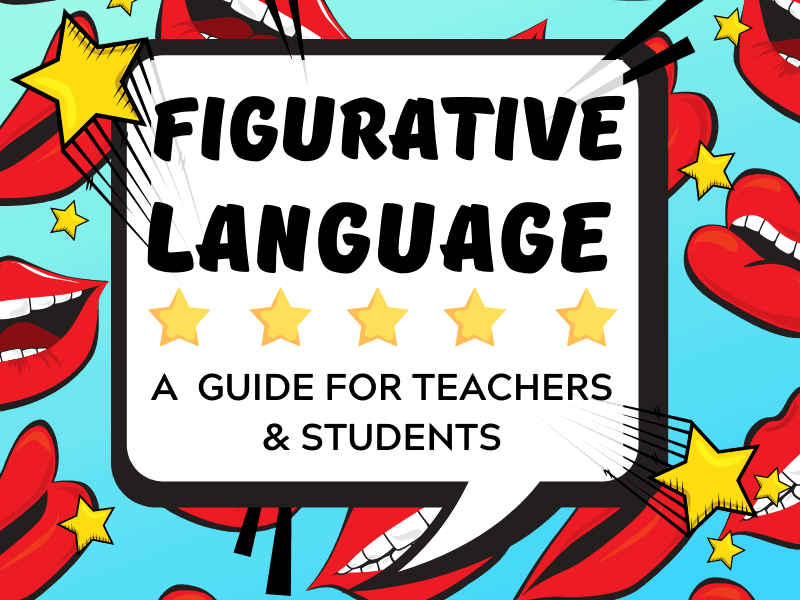
WHAT IS FIGURATIVE Linguistic communication? A DEFINITION

Nosotros near ofttimes acquaintance figurative linguistic communication with poetry, merely we notice figurative language widely used in many other contexts too. Nosotros find it in utilise in everything from fiction and folk music to drama and our daily speech.
The term figurative language refers to any use of linguistic communication that goes across the literal meaning of the words themselves. In many instances, the phrase also refers to instances where the apply of sounds, syntax, and word order deviate from what is considered the normal patterns of employ. It is this definition that we volition explore in this guide.
A COMPLETE FIGURATIVE LANGUAGE Unit FOR STUDENTS
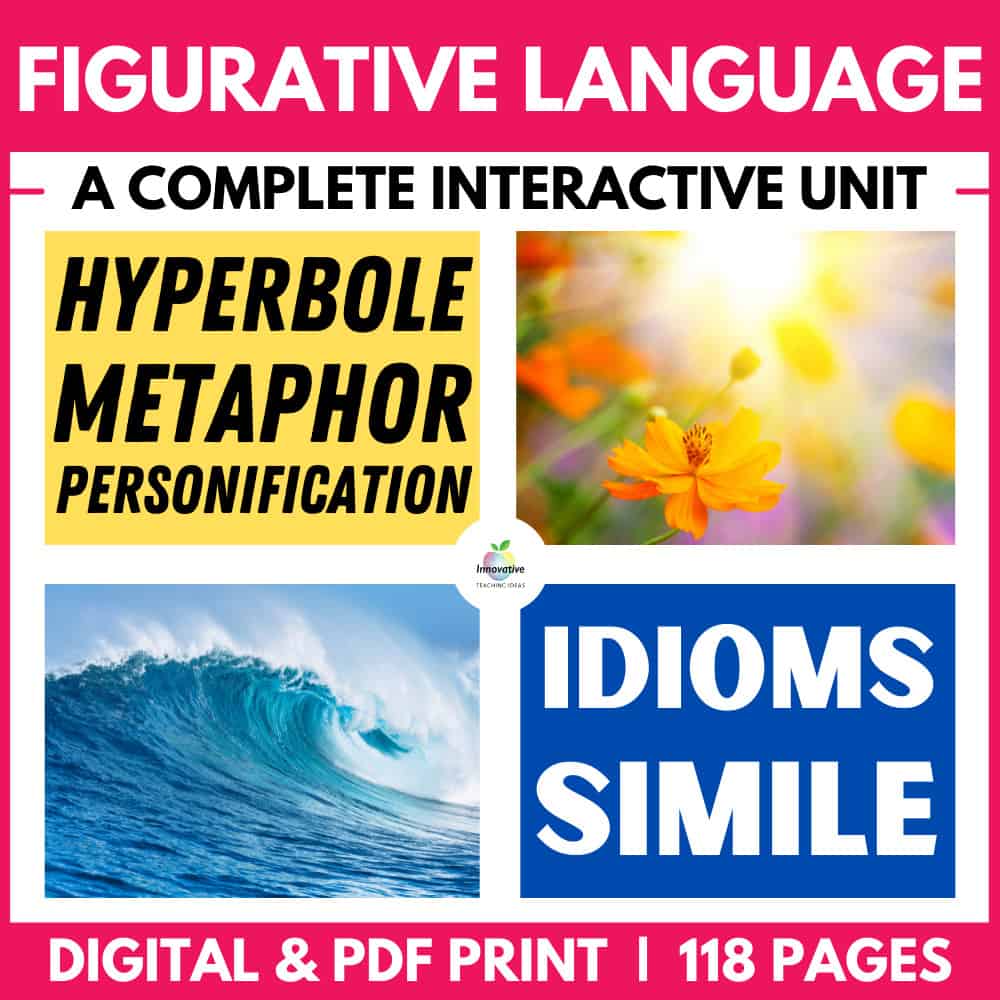
❤️The use ofFIGURATIVE Language is similar"SPECIAL EFFECTS FOR AUTHORS."Information technology is a powerful tool to createVIVID IMAGERY through words. ThisHUGE 110 PAGE Unit of measurement guides you through a complete understanding ofFIGURATIVE LANGUAGE as both aREADER andAuthor covering.
WHY DO WE USE FIGURATIVE Linguistic communication?
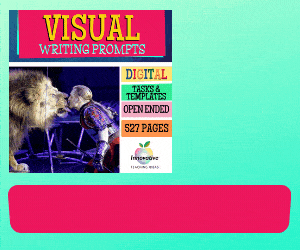
In both regards mentioned in a higher place, figurative linguistic communication represents a sophisticated, creative apply of linguistic communication to convey meaning and mood amidst other effects. It represents an important tool in the writer's toolbox.
These artistic applications of linguistic communication help readers to visualize the writer's intended meaning, as well equally establish atmosphere, rhythm, and other stylistic effects. The utilise of these literary devices creates an constructive and cute fashion to communicate through the written and spoken word.
Using figurative language helps speak to a reader's emotions, also as to articulate more abstract and complex concepts in a relatable way. How a writer uses figurative language in their work constitutes a large element of their manner.
TYPES OF FIGURATIVE LANGUAGE
Figurative language is a broad category that encompasses all types of figures of oral communication, including audio devices and imagery.
In that location are lots of different types of figures of speech, but broadly speaking these tin helpfully be divided into two groups: tropes and schemes.
In this article, we will look at various examples of figures of speech inside these 2 categories. We will ascertain them, provide an example of how they are used, and provide a straightforward activeness that requires minimal training and will permit students to do these in class.
FIGURES OF Oral communication: TROPES AND SCHEMES
I. TROPES

A trope is a figure of speech that uses words or phrases in a way in which the intended meaning extends beyond the literal significant of the words used. Some of the about unremarkably used tropes include metaphor, simile, and personification. But, there are many others. We will take a await at some of the chief ones below.
HYPERBOLE:

Definition: This figure of spoken communication uses exaggeration for emphasis or other specific furnishings such every bit humour, for example. As with other figures of speech, it is not meant to be taken literally by the audience or the reader – they are usually in on it. We frequently use hyperbole in our daily speech.
Example: I could take died of embarrassment
Chore: Give students a list of comparative adjectives. Y'all can differentiate these according to the students' ages and abilities. Challenge students to compose hyperbole based on each of these adjectives. Use the model phrase 'brighter than the sunday' to get the brawl rolling.
Nosotros have a consummate guide to hyperbole in literature which tin can be found here
IDIOM:

Definition: An idiom is a figurative use of language that cannot be understood from a literal understanding of the words alone. Idioms are a office of the linguistic communication and each linguistic communication develops its own unique idioms over fourth dimension. Idioms are similar to other figures of oral communication except that while most other figures of speech tin exist the original conceptions of the writer, idioms are already in existence within the language. Many of Shakespeare's figures of spoken communication take become crystallized in the language as the idioms of today.
Example: ' Kick the bucket / Gave upwards the ghost / Passed away '
Task: You tin help students bridge the gap between their understanding of figures of spoken language and idioms through this activeness. Provide students with a list of idioms on various themes. Talk over these and ensure they have a sense of their pregnant. Challenge the students to etch their own figures of speech on each of these themes using the sample idiom as a starting point.
METAPHOR:
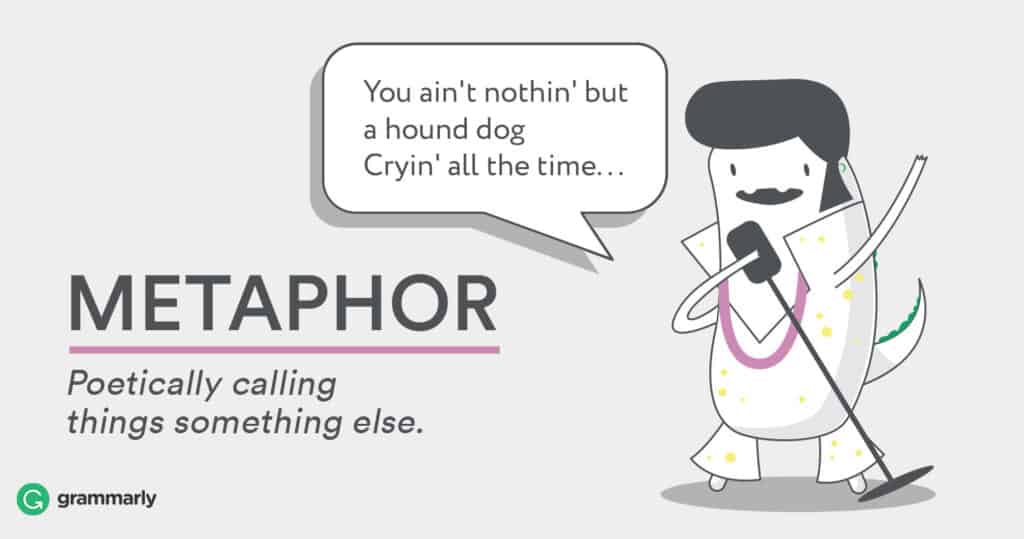
Definition: A metaphor makes a comparing betwixt two unrelated things past stating one thing is the other thing. This is usually done by highlighting or suggesting a shared quality or characteristic between the two distinct elements.
Instance: Life is a rollercoaster
Task: Metaphors are commonly used in speech, poetry, plays, songs, and stories. To give your students practice identifying metaphors in a range of contexts, organize them into groups and provide them with a range of the types of reading materials listed above. Accept students read and listen to these materials and identify examples of metaphor in each, compiling a list as they get.
OXYMORON:
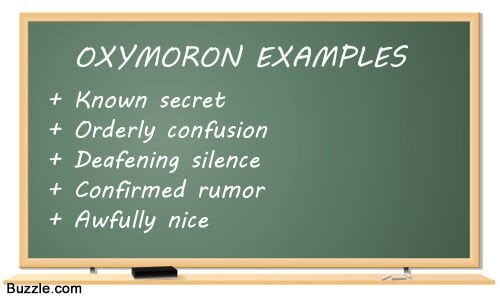
Definition: Oxymorons combine two opposing elements into a single phrase or sentence. They can be used to create a range of effects, comedic, dramatic, or idea-provoking.
Example: " Parting is such sweet sorrow . "
Task: Oxymorons are very common in our daily speech, for example 'seriously funny', 'random club', and 'pretty ugly'. Organise the students into groups and challenge them to come up with as many other common examples as they can. As an extension exercise, ask the students to etch some original oxymorons too.
PERSONIFICATION:
Definition: Personification is a special type of metaphor where homo actions or feelings are ascribed to a non-human thing. When we talk most something that isn't human every bit if it was, then we are personifying it – that is, making it into a person. This figurative utilise of linguistic communication is most commonly associated with poesy and literary fiction, but we can often find information technology in our daily voice communication too.
Case: An angry sky / Books were her abiding companions / That machine's a beauty
Task: Organize the students into pairs. Instruct Partner i to compile a list of ten nouns, these can exist inanimate objects such equally a pencil, a chair etc or natural phenomenon such equally moon, stars, sun etc. Have Partner ii compile a listing of x verbs associated with the actions of man beings, for example express joy, tell, sing etc. When both partners accept completed their lists they can apply their nouns and verbs to write their own personification sentences.
SIMILE:

Definition: Similes make comparisons betwixt 2 seemingly unrelated elements by using 'like' or 'as' to highlight a mutual quality or characteristic both things share. Similes make a comparing by suggesting a similarity between ii things, rather than making a comparing past stating that one thing is something else – such every bit we notice with metaphors.
Example: Her optics shone like diamonds / He was as stiff as a horse
Chore: Brainstorm this activeness by asking students to compile a list of say ten nouns and 10 adjectives. Challenge the students to form original similes utilising the nouns and the adjectives on their listing to ready a simile comparison. For example, if they choose the noun cat and the adjective smart they must generate the final element to complete their simile, for instance, The cat is as smart as a computer. They should exercise this until they have completed a simile for all items on their lists. Encourage them to strike a balance between the similes that use similar to brand the comparison and those that use as.

SYNECDOCHE:
Definition: This effigy of speech well-nigh often occurs when a part of a thing is used to represent the whole of a matter. Nevertheless, it can also occur when the whole of a thing is used to stand for a function of a thing. The starting time blazon is called microcosm and the 2d, macrocosm. This trope is better conveyed through illustration than explanation.
Example: All hands on deck! (microcosm) / The United States declared war. (macrocosm)
Chore: Organize students into groups and give out copies of old newspapers. Challenge the students to spot examples of synecdoche in the various articles and and so highlight them. They may wish to employ 2 dissever colors for identifying the two different types mentioned above.

2. SCHEMES
Schemes are a figurative employ of linguistic communication that deviates from the usual mechanics of a sentence. This may exist in terms of syntax, sound, or word order. Writers can employ schemes to create rhythm, musicality, or to draw comparisons or contrasts within a text. They are specially associated with poetry, as they ofttimes piece of work on a rhythmic footing or through sound. Different tropes, schemes operate on a sense level more than an intellectual level.
ALLITERATION:
Definition: The repetition of the initial consonant sound of consecutive or near sequent words for upshot. Ingemination is also referred to as head rhyme or initial rhyme.
Example: The s lithering s nake s hat s ideways due south ilently
Task: Read some tongue twisters as a course and and so challenge the students to produce their ain examples.
ASSONANCE:

Definition: The repetition of vowel sounds within a grouping of words. As with ingemination, it is the repeating sounds that are important, non the messages.
Example: " Fl ee t f ee t sw ee p by sl ee ping g ee se " by Pink Floyd
Task: Assonance can exist used to convey different moods. For example, repetition of long, wide 'o' and 'a' sounds can express sadness or melancholy. Challenge your students to write a line that uses assonance to limited a selected mood.
CONSONANCE:
Definition: The repetition of consonant sounds anywhere in the words that are near each other. This should exist distinguished from alliteration, where the repetition is limited to the sounds at the beginning of words. Alliteration is a special type of consonance, and then all alliteration is a course of consonance, just not all consonance is ingemination.
Example: " I'1000 south ure sh e sells sea- sh ore sh ells "
Chore: Requite out a worksheet with a mix of unmarked examples of alliteration, consonance, and assonance and have the students sort them into the correct categories. You may want the students to utilize a Venn diagram so they tin can more than easily categorize those that fit into more than than 1 category.
ONOMATOPOEIA:
Definition: Onomatopoeia refers to words that sound like the thing they describe. Onomatopoeia is most commonly seen in poetry where its utilize serves as a powerful tool for the imagination every bit it imitates the sounds of the things described themselves. A common example of onomatopoeia can be seen in the names of the sounds various animals brand.
Example: Woof! Baa! Moo! Oink! Cock-a-doodle-do!
Job: To get your students thinking virtually onomatopoeia, give them a theme and challenge them to listing as many onomatopoeic words as they tin can effectually that theme. This tin can hands exist differentiated for various age groups. For example, younger kids can piece of work on beast sounds like those above, while older students tin can work on a theme such as that of water (drip, splish, splosh, splash, plop etc). For stronger students, simply provide them with a theme and task them with creating their own related and original onomatopoeic words.
PARALLELISM:
Definition: This scheme is also known as a parallel structure and applies to sentences or phrases that employ an identical or very like structure. Parallelism is ofttimes used to bring clarity and emphasis, every bit well every bit create a memorable rhythm. Some of history'due south most memorable speeches and statements used parallelism to swell effect and these have stayed with us for many decades as a result. Neil Armstrong's reported words on the moon landing and Martin Luther Male monarch's I Have a Dream spoken language being prime examples.

Example: " That's 1 pocket-sized step for a man. One giant bound for mankind. " by Neil Armstrong.
Task: Provide students with sample sentences that do not use a parallel structure within them. Challenge the students to rewrite the sentences to comprise a parallel structure into the new sentences. For example, give the students the following sentence:
Exercise y'all adopt spicy chicken, pork, or salty fish for the main form?
Students should work to recognize that the underlying construction involves an describing word preceding two of the food options and should rewrite the judgement to include one for the pork. Answers will of class vary, just all are valid as long as they conform to the pattern. For instance:
Practice yous prefer spicy chicken, sweet pork, or salty fish for the main course?
Go Figure!
These are just some of the various ways that language is commonly used figuratively. There are many more of course, though some of these tin be quite rarely used. It's best to start with these more common ones outset, before moving onto some of the more complex literary devices bachelor.
Spending some time working on figurative language in isolation volition assist students to understand how to use the various figures of oral communication in their own writing.
But, to use them in a confident and unselfconscious manner will require lots of reinforcement in their use throughout the schoolhouse yr.
While early attempts to weave them into their own writing may seem stilted and unnatural, with time and practice they will get role of a student's personal way and assist enable them to clear and express their thoughts in an artistic and coherent manner.
A COMPLETE FIGURATIVE Linguistic communication Unit of measurement FOR STUDENTS

❤️The use ofFIGURATIVE LANGUAGE is like"SPECIAL EFFECTS FOR AUTHORS."It is a powerful tool to createVIVID IMAGERY through words. ThisHUGE 110 PAGE UNIT guides yous through a complete agreement ofFIGURATIVE Linguistic communication as both aREADER andWRITER covering.
OTHER Peachy ARTICLES RELATED TO FIGURATIVE LANGUAGE
The content for this page has been written by Shane Mac Donnchaidh. A former principal of an international schoolhouse and university English lecturer with fifteen years of teaching and administration experience. Shane's latest Book the Complete Guide to Nonfiction Writing can be plant here. Editing and support for this article accept been provided by the literacyideas team.
Source: https://literacyideas.com/figurative-language-for-students-and-teachers/



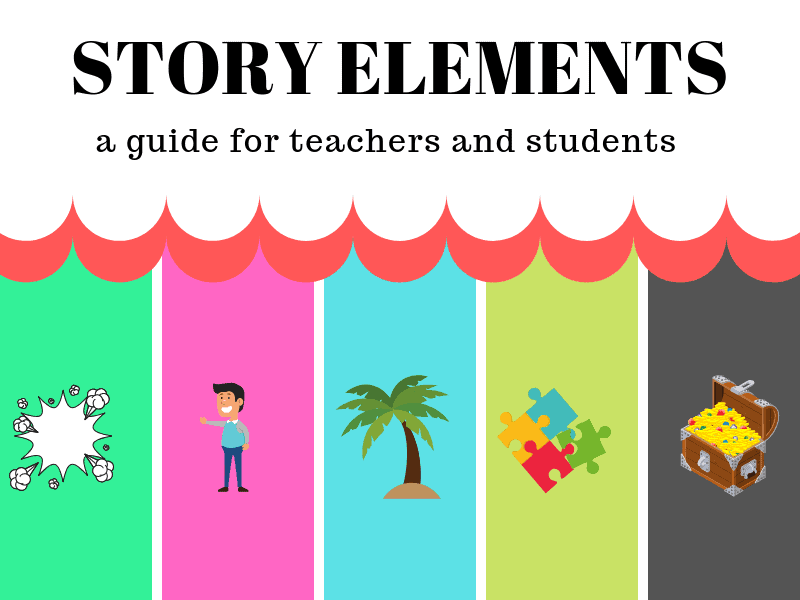
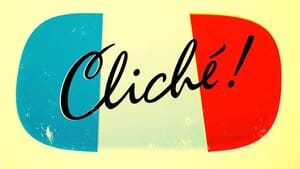
0 Response to "Language Arts Terms 1 English Ix Skills How Is a Simile Used"
ارسال یک نظر